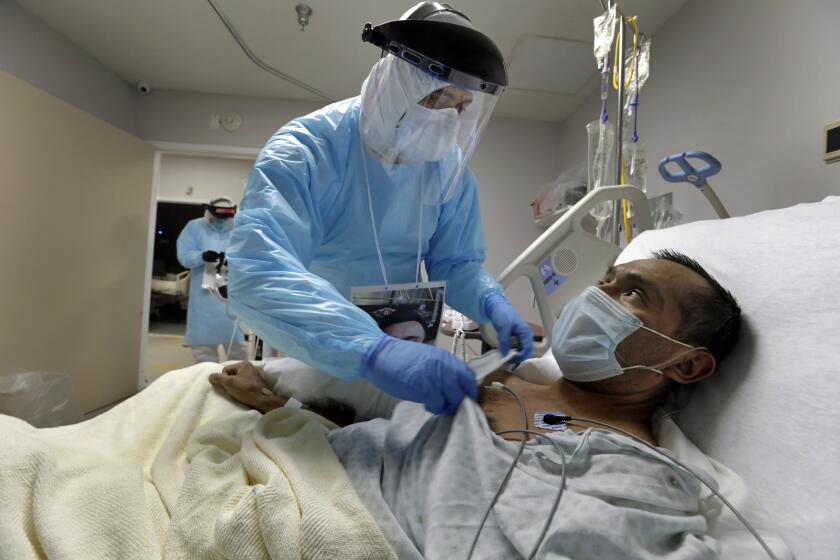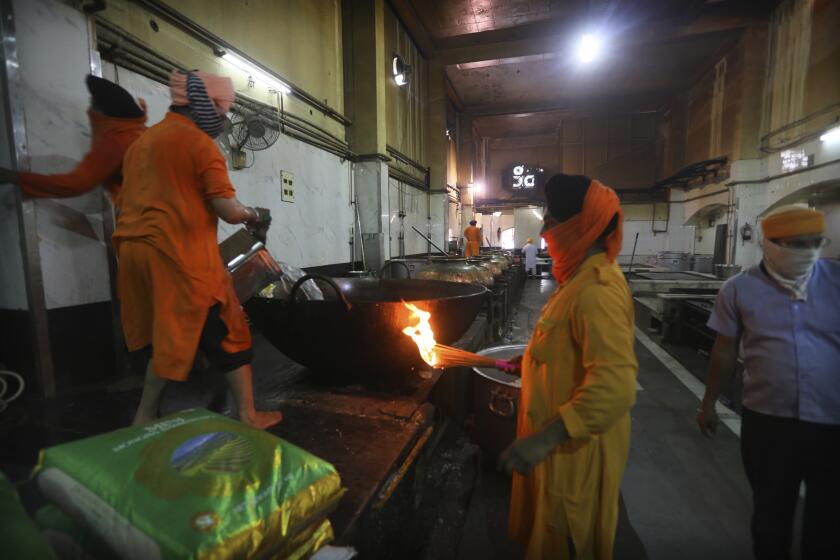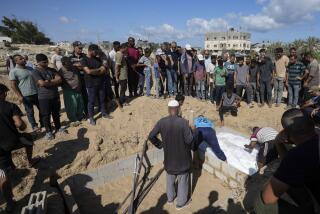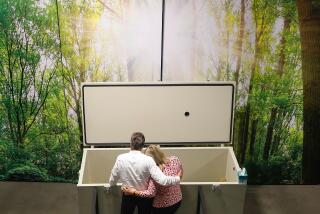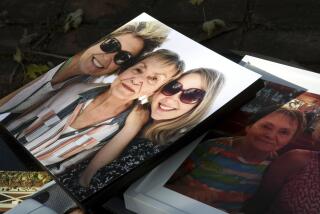New Delhi’s crematoriums overwhelmed by COVID-19 deaths
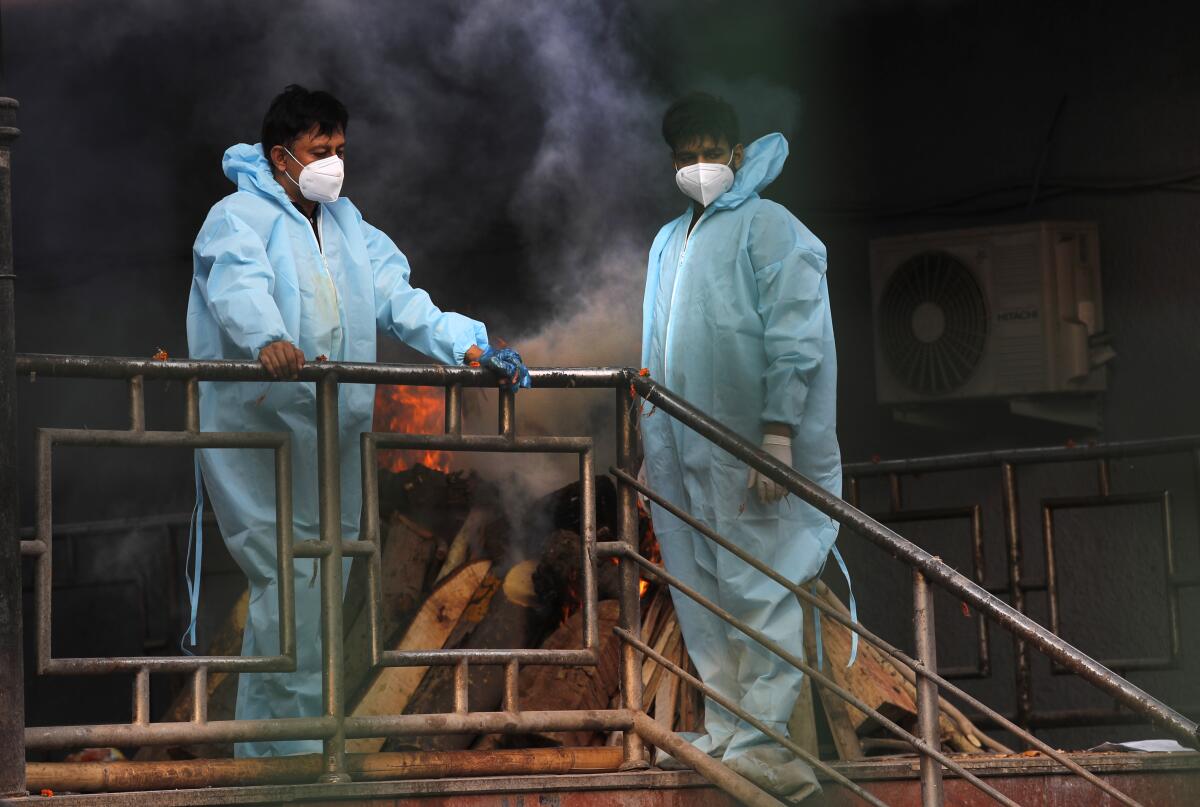
- Share via
NEW DELHI — When Raj Singh’s 70-year-old mother died from the coronavirus in India’s capital, he took comfort in the prospect of a proper cremation, the funeral rite that Hindus believe releases the soul from the cycle of rebirth.
But instead of chanting sacred Vedic hymns and sprinkling holy water from the Ganges River, all Singh could do was place his mother’s wrapped corpse on a wooden pyre and along with a handful of relatives watch it burn.
“I never thought I would watch my mother go like this,” he said.
Like elsewhere in the world, the novel coronavirus has made honoring the dead in New Delhi a hurried affair, largely devoid of the rituals that give it meaning for mourners. Cemeteries and crematoriums are overwhelmed, so there isn’t much time for ceremony, and even if there were, the government limits the number of people allowed at funerals, and those in attendance must maintain distance and wear masks.
“The whole grieving process has been interrupted,” said Pappu, who goes by only one name and lights the funeral pyres at Nigambodh Ghat, New Delhi’s biggest crematorium.
New Delhi has officially reported close to 1,100 deaths from the coronavirus, but cemeteries and crematoriums in the city say the actual number is several hundred higher. Hospital morgues are beyond capacity, and with summer temperatures reaching 104 degrees, some bodies are being kept on thick ice slabs.
Coronavirus alarms ring louder after worldwide new cases hit a single-day high.
“In the beginning, I used to carry only one body. Now, helpers at the morgue will stack as many bodies as they can fit in my van,” said Bhijendra Dhigya, who drives a hearse from one New Delhi hospital to the crematorium.
The spike in deaths in New Delhi comes amid a broader virus surge throughout India, where authorities are reporting some 10,000 new infections each day and more than 300 deaths. Nevertheless, India lifted most of the remaining restrictions from its 10-week lockdown on June 8, the same day it recorded what at the time was its highest single-day death toll from the virus.
On Friday, India’s nationwide case count overtook Britain to became the fourth-highest in the world with 297,535 confirmed cases and 8,498 deaths, according to the Health Ministry. But that is just the known cases. Like elsewhere in the world, the actual number of infections is thought to be far higher for a number of reasons including limited testing.
New Delhi’s health centers are under immense strain and the state government’s deputy chief minister, Manish Sisodia, said this week that a state health department model has projected a worst-case scenario in which the number of infections in the capital — already at nearly 35,000 — could reach 550,000 by the end of July.
In the worst-case scenario, Sisodia said New Delhi would need 80,000 hospital beds, far more than the roughly 9,000 hospital beds currently available for virus patients. The state government is considering taking hotels and sports stadiums to use as field hospitals.
The capital’s Nigambodh Ghat crematorium has handled more than 500 coronavirus cremations since the beginning of the outbreak. When some of its gas-fueled incinerators broke down, there was no one willing to repair them, so the staff reverted to traditional wooden pyres.
Even with working hours extended, there has been no time for individual cremation ceremonies and exhaustive rituals with incense, garlands of marigold and chanting.
A Sikh temple in India’s capital city continues its centuries-old mission of providing free meals to the needy during the coronavirus lockdown.
The crematorium is now largely quiet except for the distinct snap and crackle of the burning wood and the din of sirens from ambulances bringing more bodies.
The virus has upended Muslim burial rituals in the city as well.
Islamic burials normally involve a simple ceremony. Before the body is laid to rest, it is washed. Those attending the funeral are allowed to have a look at the face of the dead and a prayer is performed, followed by a sermon from a cleric. Then close family members help place the body in a grave.
Now bodies arrive at New Delhi’s largest Muslim cemetery in hearses manned by crews in hazmat suits. Bodies aren’t washed and mourners can’t view them. There are no sermons.
The cemetery has already seen more than 200 burials of COVID-19 victims, and with bodies steadily arriving, the grounds are filling fast.
On a recent day at the burial of a 22-year-old man who died of the virus, a backhoe dug a grave as four relatives said a speedy prayer. The body was then lowered into the grave by ropes.
Mohammad Shameem, a gravedigger who now oversees the burials, shook his head in disapproval as the backhoe quickly carved out another grave.
“That’s not how burials should happen,” he said.
More to Read
Sign up for Essential California
The most important California stories and recommendations in your inbox every morning.
You may occasionally receive promotional content from the Los Angeles Times.
